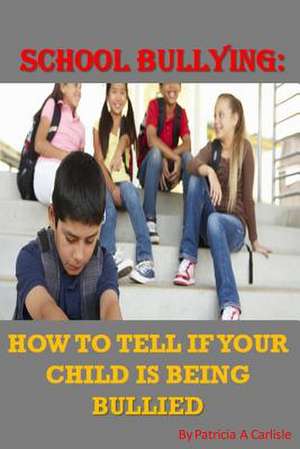School Bullying
Autor Patricia a. Carlisleen Paperback
Preț: 64.38 lei
Nou
Puncte Express: 97
Preț estimativ în valută:
12.32€ • 12.73$ • 10.25£
12.32€ • 12.73$ • 10.25£
Carte indisponibilă temporar
Doresc să fiu notificat când acest titlu va fi disponibil:
Se trimite...
Preluare comenzi: 021 569.72.76
Specificații
ISBN-13: 9781548348403
ISBN-10: 1548348406
Pagini: 76
Dimensiuni: 152 x 229 x 4 mm
Greutate: 0.11 kg
ISBN-10: 1548348406
Pagini: 76
Dimensiuni: 152 x 229 x 4 mm
Greutate: 0.11 kg
